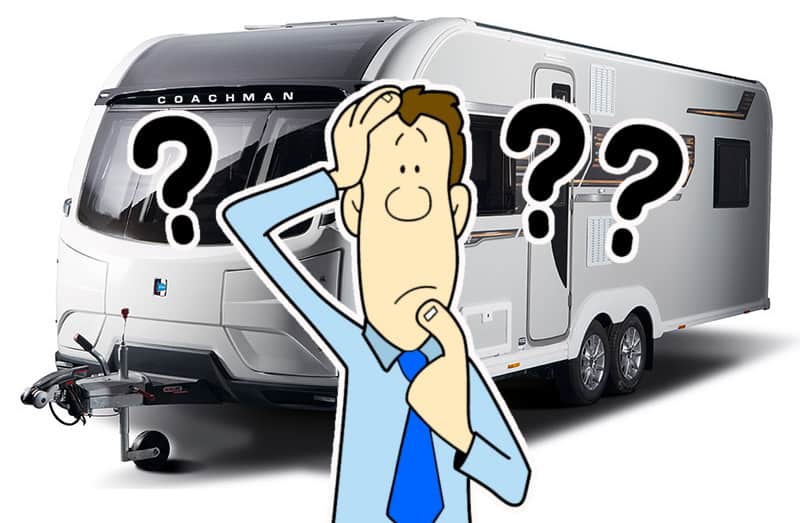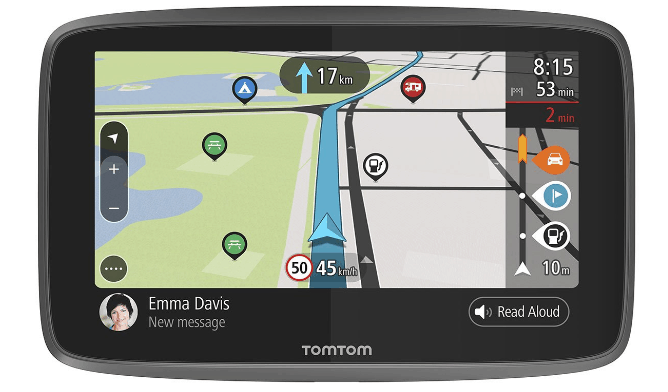
Due to our fully serviced pitches, we get quite a few beginners new to caravanning each year. Some take to caravanning like a ‘duck to water’, whereas others struggle with some of the terminology used when it comes to setting up and maintaining their caravan. So with today’s post, I thought I would run through some of the caravanning jargon that beginners to caravanning need to understand. Depending on how old your caravan is, some of the caravanning terminology referenced below may not be relevant.

Handily a couple of years back, the Caravan Channel (now Practical Caravan TV) did a series of very handy and quick videos on caravanning jargon for beginners.
I’ve tracked down the links for those videos and embedded them into this post.
They serve as a really good introduction to the various caravanning terminology, which I can then discuss in a bit more detail. The links below go to my various other posts on related topics.
I’m building up quite a good library now of posts on the various caravanning and motorhome topics.
For instance, if you are still trying to decide which leisure vehicle to go for you, you may be interested in my posts on campervans vs caravans.
As with my other posts, you can use the Table of Contents below if you are searching for information on a particular subject. Enjoy 🙂
Disclaimer: Hey! By the way… any links on this page that lead to products on Amazon or Caravan Guard are affiliate links, and I earn a commission if you make a purchase, with no additional cost to you 🙂
- Dissolves waste and removes odours naturally and has delightful mild fragrance
Want To Visit Horton Common? – Book Here
Table of Contents
Beginners Guide To Caravanning Jargon – Video 1
The Caravan Hitch & Stabiliser
As John states in the video, the caravan hitch is also sometimes referred to as the coupling head or coupling hitch. Now, the version that John has in the video is quite old.
Most of our guests have the AL-KO hitch fitted to their caravans. However, some also have a blue hitch made by a company called Winterhoff.
Using the image above as a reference the hitch is actually under the black plastic handle.
The black plastic handle is the caravan stabiliser. First, you lift up the stabiliser to get access to the hitch handle.
You then lower the caravan hitch onto the car’s tow ball and then lower the black plastic stabiliser handle. This helps to reduce sway and ‘snaking‘ of the caravan to improve stability while towing.
You may also want to read my post on how to hitch up a caravan.
Caravan Mains Electrical Hookup
Most caravan sites today, such as our own, offer a mains electrical supply. Your caravan should come with an orange hook-up cable, as seen in the image below.
Within the side locker that houses your caravan’s leisure battery, there will likely be a socket to connect up the mains power cable.
Within the caravan, just like in your home, the power first goes through a consumer unit. There is usually a main breaker and two smaller breakers, one for the power sockets and one for the lights in the caravan.

Caravan mains power cables are typical 10m or 25m in length such as this one: Image – Amazon.co.uk
Now, the power connection to your pitch will contain a socket, and what’s called an RCD (Residual Current Device).
The highest rating RCD you will find on UK caravan sites such as ours is 16A which can provide a maxium of around 3.6kW to your caravan. Some sites, however, have lower-rated RCDs.
These could be 10A (2.3kW) or even 6A (1.3kW). If there isn’t 16A available, you really need to think about the power of the appliance you use in the caravan, such as a suitable caravan kettle.
For example, if you use a standard domestic kettle in your caravan, the RCD will likely trip, and you will have to reset the switch.
Caravan Water Pump Basics
Depending on the spec of your caravan, you will either have an external submersible water pump or an internal diaphragm pump.
If your purchasing a new caravan, the dealer may provide an Aqua roll (water container). If you intend to purchase a used caravan, it may come with an Aqua Roll.
A submersible pump is lowered into the Aquaroll. If the caravan has an onboard submersible pump, just a pipe is lowered into the water container.
If you are on a fully serviced pitch such as ours, you can also use a special mains water float valve kit to automatically keep the Aqua roll topped up with water.

A typical example of a submersible caravan water pump: Image – Amazon.co.uk
Now, its important to note you may have a caravan water filter fitted. These do have to be changed from time to time.
Furthermore, you need to understand how to sterilise the water system so its safe to use.
Sometimes beginner caravanners may find the tap doest work, and if that’s the case, my linked post provides some possible causes.
Beginners Guide To Caravanning Jargon – Video 2
The Caravan Breakaway Cable
One of the most important aspects of hooking up a caravan to a car every caravan beginner should learn is how to properly use the breakaway cable.
The clue to the purpose of the breakaway cable is in its name.
If, for some reason, your caravan became unhitched from your tow car during transit, the breakaway cable should snap and engage the handbrake on the caravan.
However, best practice advice on caravan breakaway cables has changed recently. Not only on the type of caravan breakaway cable to use but also on how it should be fitted:

The new best practice is to only use a carabiner type caravan breakaway cable (pictured) and not a spring clip cable: Image – Amazon.co.uk
Furthermore, how you fit the brakeaway cable to your car is important. Just looping it over the tow ball is not recommended if your car has a dedicated breakaway cable fixing point.
However, it can get quite complicated for beginners, as what would appear to be a suitable connection point may be dangerous.
If you read my post on caravan breakaway cables, you’ll understand what I mean by that.
Using The Caravan Fridge & Winter Covers
As John states in the video, if you are using your caravan and the outside temperature is around 8-10 degrees Celcius you should be using an external fridge vent cover.
If you don’t, the fridge may cool the contents too much and even start to freeze your food.
Your caravan may come supplied with a set of fridge covers. Therefore before you go out and buy a set have a rummage around the kitchen units to see if you can find them.
Alternatively, ask your caravan dealer if they can supply them. Or, as is often the case today, you can buy a set online. Just make sure you purchase the correct covers to suit your specific caravan fridge.

Only the correct caravan fridge covers will fit the specific unit built into the caravan: Image – Amazon.co.uk
While we are on the topic of fridges, there is a particular caravan fridge problem that one of my guests made me aware of./
New modern tow cars with the most efficient Euro 6 engines and stop-start technology have been reported to stop the fridge from running properly while in transit.
Its to do with the car not providing sufficient voltage to keep the fridge happy.
While this is an issue many caravanning beginners will not be aware of, many experienced caravaners are actually not aware of this issue.
Its quite complicated to explain, but if you are interested, the link above goes to my relevant post.
Tap Microswitches Or Pressure Sensitive Switches
In my previously referenced post above about the potential causes for a caravan tap to stop working, a microswitch failer is one of the possible causes.
They aren’t generally the most robust electronic items you’ll come across.
Therefore, if your caravan does have microswitches fitted to the taps, its a good idea to have a set of replacement switches stored in the caravan.

A set of two caravan tap microswitches costs below £15 for the pair: Image – Amazon.co.uk
However, the majority of modern caravans use a pressure switch for the water system as opposed to microswitches. Sometimes the water pressure switch is mounted in the pump itself.
Often its an independent switch, as shown in the image below. Usually, you will find this switch close to where the water pipes enter the caravan, usually under the seats.

As with tap microswitches, occasionally water pressure switches can fail on a caravan: Image – Amazon.co.uk
Its important to note, however, that your caravan will not be fitted with tap microswitches and a pressure switch. It will be one or the other.
Finding out which one your caravan has will make it much easier to work out potential issues if the taps stop working.
Beginners Guide To Caravanning Jargon – Video 3
12V DC to 230V AC Power Inverters
If you only ever intend to use caravan sites which provide mains hook-up, you’re not going to need to use an inverter.
However, if you ever want to go wild camping off-grid and you want to charge your phone or power a laptop, for instance, you’re going to need 230V AC power.
The leisure battery on your caravan provides 12V DC power. Therefore, you would need an inverter to take that 12V DC power and turn it into 230AC power.
There are many different types and sizes of caravan inverter, and I’ve written about them in-depth in my linked post.
Depending on the type of appliance you want to run, you will need an inverter with a suitable output wattage. Physically larger inverters will also typically have a larger power output.
However, you do have to be careful. If not installed and monitored correctly, you can quite easily drain your leisure battery.
Furthermore, if you go below 50% of the capacity of your leisure battery, it may be permanently damaged.
There are some leisure battery chargers which have the ability to recover a damaged caravan leisure battery.
Caravan Lighting – Halogen vs LED
Most older caravans (and even some new caravans) come with halogen spotlights.
As John states in the video, they produce a lot of heat. Well, that heat is wasted energy when the primary purpose is to provide light.
When running from the mains hook-up, this may not be much of a concern to beginner caravanners.
However, if you want to go wild camping off-grid, you should be more concerned with how inefficient halogen caravan bulbs are compared to LED lights.

An LED ceiling light for your caravan is a simply retrofit even for a caravanning beginner: Image – Amazon.co.uk
As John states in the video, to can typically run eight LED lamps for the same power as one halogen lamp. When your wild camping off-grid, the power for your lights is provided by the leisure battery.
Therefore, think about this in the simplest terms. With LED lights, your battery will provide light for eight times longer than using halogen lamps!
Beginners Guide to Caravanning Jargon – Video 4
Annual Caravan Servicing and Check Sheet
Every year you should take your caravan for servicing. This does not only ensure that the caravan is safe to tow and use, but also that the systems of the caravan work on your holiday as you would expect.
There is jargon referenced by service centres, such as the ‘one shot flange nut’ and covered by John in the video above.
The one-shot nut holds the brakes and wheels onto the caravan chassis, and, as described, its used once and then discarded.

When you collect your caravan from the service centre they will often give you the old nuts as evidence they have been replaced: Image – Amazon.co.uk
Now, I would advise all caravanning beginners to get their caravan serviced annually by a service centre.
Working on items such as the caravan brakes when you’re not sure what you’re doing could have tragic consequences.
However, there are basic tasks such as servicing corner steadies which I do believe even a caravanning beginner can handle.
Furthermore, I also think every caravan beginner should be familiar with how to jack up a caravan.
As there is a right and wrong way to do it. And if you get a flat tyre, knowing how to properly jack up your caravan is essential to avoid damage.
Blade Type Caravan Stabilisers?
Ok, so the reason I’ve put a question mark on the title above is that I’ve already referenced caravan stabilisers at the start of this post, so you may be confused.
Well, older caravans didn’t come with the ‘hitch type’ caravan stabilisers with plastic handles. They didn’t actually come with a stabiliser fitted at all in most cases.
Therefore it was up to the caravanner themselves to choose to fit one. Hence the ‘blade type’ stabiliser was commonly used, as seen in the video above and the image below.

Most caravanning beginners today are not going to be using the blade type caravan stabiliser seen above: Image – Amazon.co.uk
The blade type is still available today, and some experienced caravaners (including some of our guests) rate them over hitch-type stabilisers. The reason being they believe that the blade type actually provides for a more stable caravan.
This may actually be the case because a blade-type stabiliser has a larger surface area providing friction to stop the caravan from moving side to side (sway).
The problem with blade-type stabilisers is they are heavy and just not as ‘user-friendly’ as hitch-type stabilisers.
Therefore, as a caravanning beginner, I would say the hitch-type stabiliser fitted to your caravan should be sufficient, as long as it is properly maintained.
Caravan Gas Regulators
Using gas in a caravan, the different types of gas (butane or propane?), and the different types of bottles (refillable?) is a huge subject area.
For this post on a beginner’s guide to caravanning jargon, I’m not going to go into too much detail here.
I just want to quickly reference John’s point in the video on gas regulators. Pretty much all modern caravans you will buy today have a caravan gas regulator built into the front locker.
Therefore, the comments John makes in the video of a blue or red gas regulator for butane or propane bottles are not applicable.

Typically, the gas regulator in your caravan will look like the one above and be located in the front locker above the gas bottles: Image – Amazon.co.uk
Whether you go for butane (blue bottles) or propane (red bottles) is a personal preference. In the simplest terms, butane is cheaper. However, it performs poorly during the colder months of the year.
What I mean by that is the colder it gets, the butane does not vaporize as easily. If the gas doesn’t vaporize, it cannot mix with air, and you won’t be able to light your stove, use the cooker etc.
Propane, on the other hand, will continue to vaporize. Hence, why particularly for winter caravanning, propane is the only suitable choice.
What Is A Caravan Sat Nav?
Something else a caravanning beginner may get a bit confused about is when other enthusiasts start talking about their new ‘Caravan Sat Nav‘.
But what’s the difference between a normal Sat Nav and one for caravans?
Well, unlike a standard Sat Nav, units which are specifically designed for caravans let you enter the full dimensions of your car and caravan.
The Sat Nav can then use that information to avoid certain roads to get you to your destination safely and with less hassle and stress:

However, if you click the link above to my post on caravan Sat Navs, they can make mistakes from time to time, and they are quite a bit more expensive than a standard Sat Nav.
Therefore, I run through my best advice on how to find the safest route with Google Maps and Street View, which you can then upload to any satellite navigation unit.
Conclusions On The Guide To Jagon For Caravanning Beginners
If you are new to caravanning or considering getting into caravanning, I hope the videos and my comments above have been at least some assistance to ‘demystifying’ the world of caravanning jargon.
I won’t lie. Caravanning beginners have a lot to learn before they will feel they have a true understanding of all the many aspects involved. I would also encourage you to read my post on how to tow a caravan.
Over recent years through running Horton Common, I’ve met hundreds of caravanners, and I still learn new things each year.
I’ve also written a similar post on a motorhome beginners guide which you may be interested in.
Finally, sorting the best caravan bedding is something beginners sometimes find difficult as well as how to change a gas bottle.
I’ve written quite a few posts on the different aspects of caravanning, which I hope is of assistance to beginners such as yourself.
Once you have your caravan and you’ve got all the equipment you need, I hope you consider coming to pay us a visit here at Horton Common to experience our award-winning, fully serviced pitches. 🙂
Want To Visit Horton Common? – Book Here

